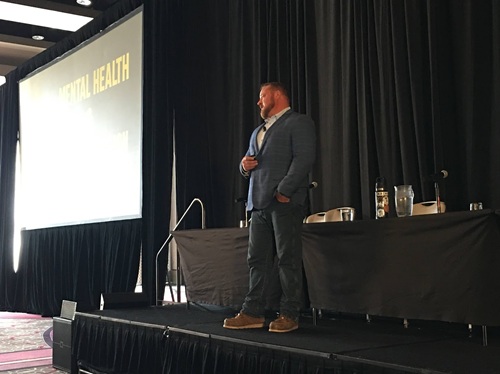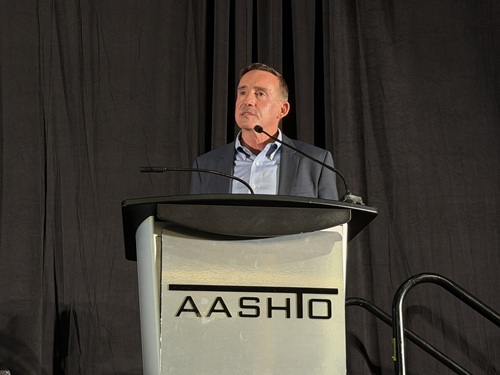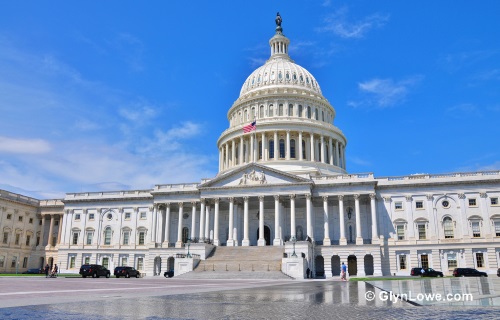Job creation, economic growth, and creating an avenue for cost-effective recycling are just some of the benefits from greater investments in highway infrastructure projects nationwide, a panel of witnesses explained during a Senate Committee on Environment and Public Works hearing on March 6.

Patrick McKenna, director of the Missouri Department of Transportation and the 2018-2019 vice president of the American Association of State Highway and Transportation Officials, noted in both his written remarks and oral comments that benefits from investment in highway transportation infrastructure go well beyond the “short-term” creation of construction jobs.
“We live in a market-based economy where the supply and demand for goods and services are typically determined through very clear price signals. You know exactly what a gallon of milk costs and what you pay for electricity. Unfortunately, for use of the transportation system, there are no similar price signals,” he explained during his testimony. “The place to start this conversation is to recognize that we need to do a better job communicating both the cost and benefits related to the use of our transportation system.”

McKenna pointed to Federal Highway Administration research that estimates each dollar spent on road, highway, and bridge improvements results in an average benefit of $5.20 in the form of reduced vehicle maintenance costs, reduced delays, reduced fuel consumption, improved safety, reduced road and bridge maintenance costs, and reduced emissions as a result of improved traffic flow.
“Perhaps most importantly, according to an FHWA study, $100 million spent on highway safety improvements will save 145 lives over a 10-year period,” he added.
Highway construction projects also offer an avenue to deploy cost-saving recycling efforts. The Missouri DOT, for example, uses recycled shingles, tires, asphalt and other materials in its pavement mix; one recycling effort among many that the agency said helped it save $298 million from 2007 to 2018.
Yet McKenna and the hearing’s other witnesses noted that current transportation system is in “dire need of attention and investment” due to its age.

Steve Demetriou, chair and CEO of Jacobs Engineering Group Inc. and a member of the Business Roundtable Infrastructure Committee, noted in his testimony that “there is a widening gap between our growing infrastructure-related needs and our level of investment; [a] gap that threatens the quality, reliability and safety of our national infrastructure.”
He explained that “from congested roads to crumbling bridges, America’s outdated infrastructure systems slow daily commutes, hamper the flow of goods and services and increase costs for businesses and households,” highlighting several statistics to illustrate those issues:
- Some 44 percent of America’s major roads are in poor or mediocre condition, while 23 percent of bridges in the national highway system are either structurally deficient or functionally obsolete.
- Congestion on major urban roadways costs the average American commuter $960 every year.
- American businesses nationwide incur nearly $27 billion in additional transportation costs annually because of inadequate infrastructure.
The witnesses differed, however, in what funding mechanisms should be used to support greater investment in transportation infrastructure.

Michael Replogle, deputy commissioner for policy at the New York City Department of Transportation, argued in his testimony that “rather than allocating more funding solely to existing formula programs,” Congress should support more “flexible funding” for state and local traffic safety initiatives, for the redesign of streets to accommodate multiple travel options, and for efforts to safeguard transportation assets against extreme weather.
“Specifically, we urge Congress to increase public transportation Capital Investment Grants, and take steps to ensure that competitive grant programs like BUILD [Better Utilizing Investments to Leverage Development] are not largely directed away from urban areas,” he added.

But Missouri DOT’s McKenna contended in his written remarks that federal funds should continue to be provided through the “existing formula-based program” structure directly to states rather than looking at “untested new approaches” that will require more time and oversight.
He also noted that streamlining environmental reviews for transportation projects, especially via changes to National Environmental Policy Act or NEPA rules promulgated last year by the Federal Highway Administration, are helping make that process “both more efficient and attractive” to state DOTs.
“Another streamlining measure is to authorize any federal agency to apply a categorical exclusion that has been adopted by any other federal agency, which would make CEs interchangeable among all federal agencies,” McKenna noted in his testimony.
“But no matter what we might think, we cannot streamline our way into providing a safe and sound transportation system,” he stressed. “We can’t cut our way to buying steel, concrete, asphalt, equipment and labor. We must work together to move transportation funding and policy in the direction of providing safety, service and stability for all.”
 Top Stories
Top Stories
Safety Summit Addresses Employee Mental Health
November 7, 2025 Top Stories
Top Stories

